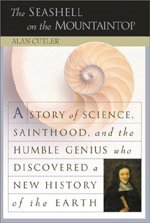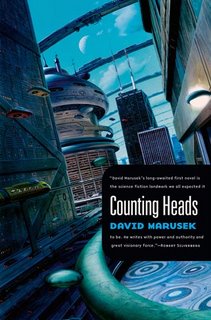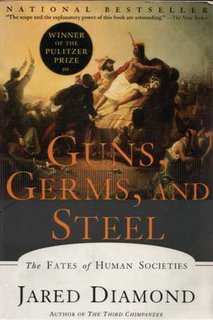
I think this will be the first book I've reviewed that would get shelved in the Fiction & Literature section at Barnes&Noble. Not because I don't read plenty of these kinds of books, but becuase it's often very difficult to say anything meaningful about them (at least, in less than 500 words). White Oleander is no exception, but I'll give it a try anyway. And don't worry because I'm a man and this is an entirely female-based story, some of the same things I thought were said on other Amazon reviews by women. So there.
The story is actually very simple. Astrid's mother Ingrid kills a lover who dumped her and ends up in jail. Astrid, being a minor, has to spend years being bumped around from foster home to foster home. In the end, she grows up to find her own way. The same sub-plot is repeated several times, which is that Astrid ends up in a new place, initially thinks it could be nice, and then realizes it's a stinking hell-hole (metaphorically, that is). And that's really all there is to it, until she finally begins to live her own life at the very end. That's the kind of pattern that I typically get bored at after it repeats itself once, and this book would not be any different if not for the writing. Make no mistake, by the time she's at the fourth place, the story has gotten extremely tiresome. But the story is not the strength of this novel. The writing is the moving force here, with the story no more than a scent on the breeze. To use a comparison, if you're sitting outside suddenly you smell an odor that's pleasant but too strong, it makes all the difference in the world whether a cool breeze is blowing or not. You get tired of the smell pretty quick, but since you're enjoying the breeze you can forget about it.
I think Janet Fitch's writing, at least in this book, is definitely comparable to a cool breeze. Astrid is so emotionally unattached that the only moments of passion in the book come from other people and their (mis)perceptions of Astrid. That also is not a bad technique to use, as too often writers create characters who are the annoying "I'm the center of the world" type (albeit without realizing it). Astrid is certainly not that, and it makes her much more sympathetic than if this same story had been narrated by a whiny brat who was fixated on hating her mother. But then, there's a problem in that too. Astrid is dominated by her mother, and because of that Fitch has too many times where Ingrid gets to rant and rave about being descended of Vikings and how normal rules of behavior don't apply to them because they're beautiful and all sorts of utter nonsense. That would still be not so bad, except that these interludes go on for too long and nobody ever once challenges her.
But let me get back to the writing. Take this excerpt:
The Santa Anas blew in hot from the desert, shriveling the last of the spring grass into whiskers of pale straw. Only the oleanders thrived, their delicate poisonous blooms, their dagger green leaves. We could not sleep in the hot dry nights, my mother and I. I woke up at midnight to find her bed empty. I climbed to the roof and easily spotted her blond hair like a white flame in the light of the three-quarter moon.
"Oleander time," she said. "Lovers who kill each other now will blame it on the wind." She held up her large hand and spread the fingers, let the wind trace itself through. My mother was not herself in the time of the Santa Anas. I was twelve years old and I was afraid for her. I wished things were back the way they had been, that Barry was here, that the wind would stop blowing.
I just like that. The language flows, and makes a nice, natural, easy pace when read aloud (try it and see). The metaphorical element is substantial, but understandable and not intrusive, not something every author manages. The imagery is also subtle, but ever-present, and it makes the book much more vivid without bogging down the book (in terms of making it more difficult to read). As a contrast, if you read Eragon by Christopher Paolini, you'll see an example of the overuse of description, or perhaps just clumsier use (not that I dislike his book, I was actually quite impressed).
All in all, the book has much to recommend it, and some to recommend against it. It is too long, a price we seem to pay for most good authors (the exceptions are few, like Hemingway and Kerouac). It is also loaded with completely unnecessary material, such as any of Ingrid's inane rantings and several replications of the "Astrid goes to new home, is hopeful, is disappointed" theme. But none of that outweighs the strength of Fitch's writing, which has impressed me like few authors have done. I have to say, if you have the spare time, read it!





